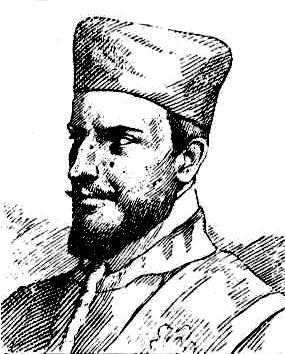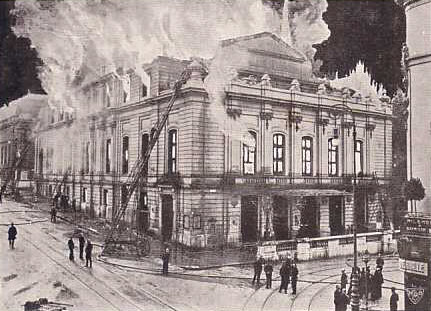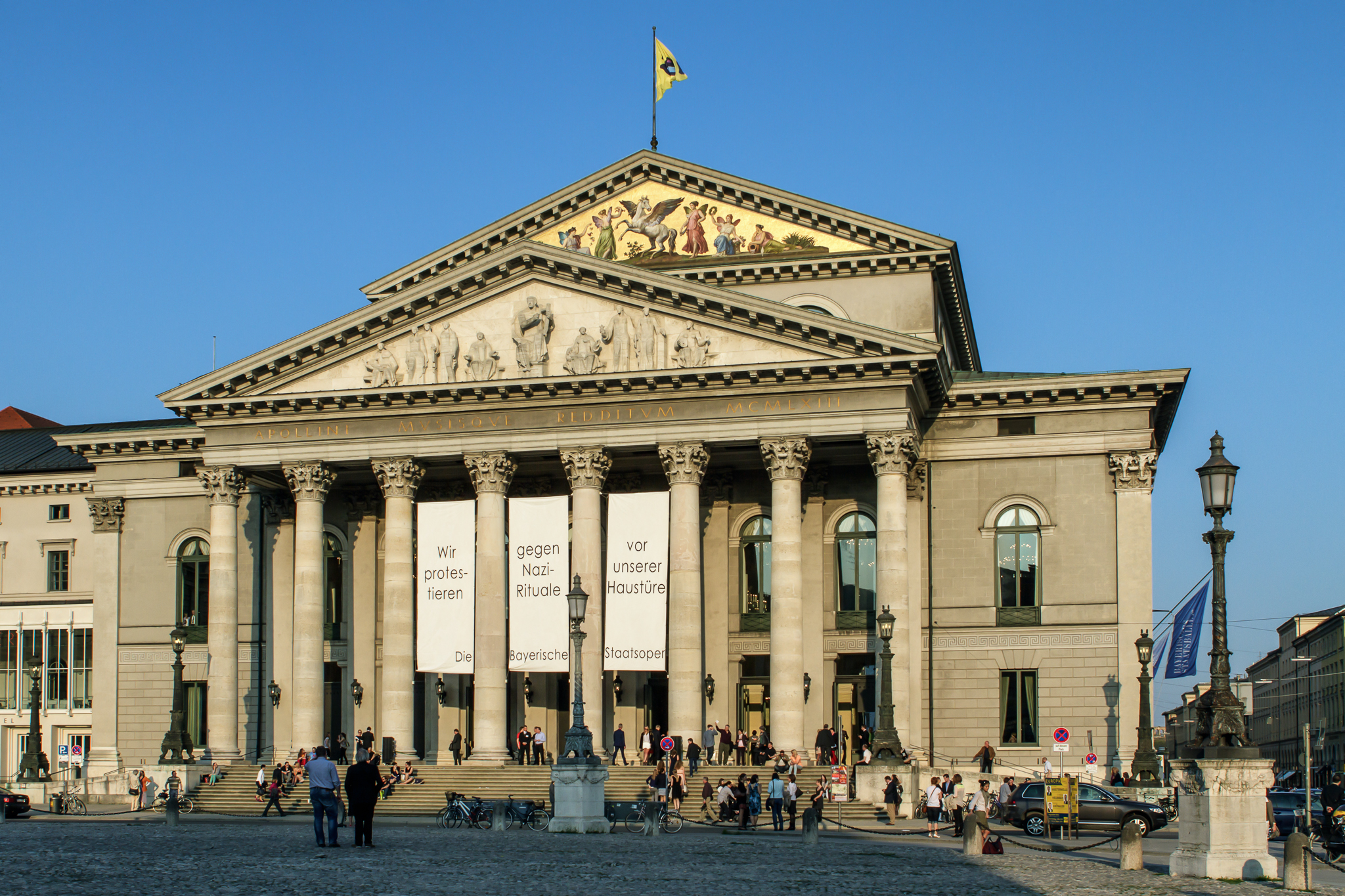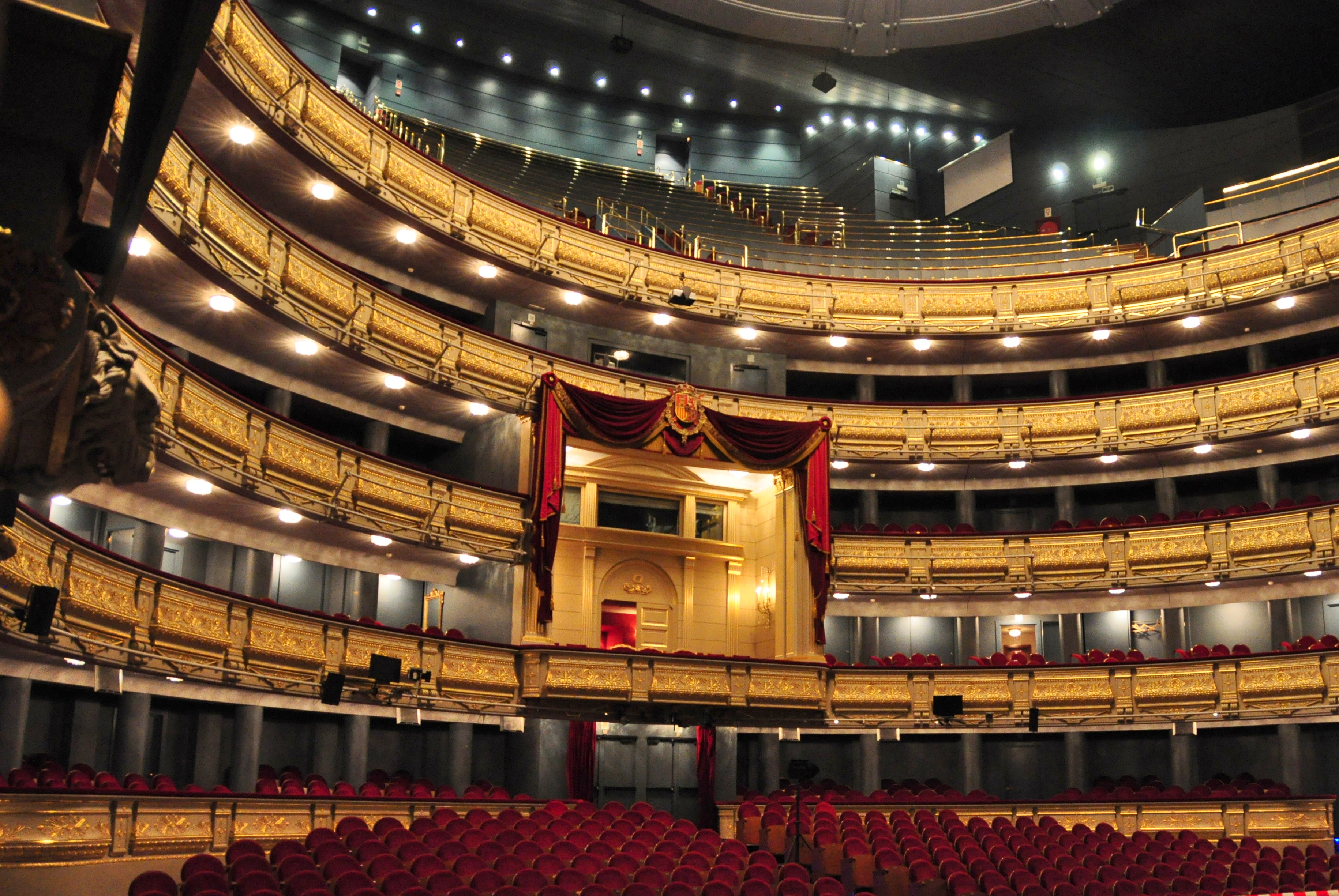|
La Calisto
''La Calisto'' is an opera by Francesco Cavalli from a libretto by Giovanni Faustini based on the mythological story of Callisto. The opera received its first performance on 28 November 1651 at the Teatro Sant 'Apollinare, Venice, where it drew limited audiences for its run of eleven performances. In the twentieth century it was successfully revived. Libretto The libretto was published in 1651 by Giuliani and Batti. The story combines two myths: Jupiter's seduction of Calisto, and Diana's adventure with Endymion. The plot is somewhat formulaic: Jane Glover has commented on how the librettist had to invent complications to meet audience expectations in the context of Venetian opera. Performance history Faustini, who was an impresario as well as a librettist, rented the Sant 'Apollinare Theatre in 1650. He and Cavalli put on three operas there before his death in December 1651 during the run of ''La Calisto''. The theatre was equipped with complex stage machinery intended ... [...More Info...] [...Related Items...] OR: [Wikipedia] [Google] [Baidu] |
Francesco Cavalli
Francesco Cavalli (born Pietro Francesco Caletti-Bruni; 14 February 1602 – 14 January 1676) was a Venetian composer, organist and singer of the early Baroque period. He succeeded his teacher Claudio Monteverdi as the dominant and leading opera composer of the mid 17th-century. A central figure of Venetian musical life, Cavalli wrote more than forty operas, almost all of which premiered in the city's theaters. His best known works include '' Ormindo'' (1644), ''Giasone'' (1649) and '' La Calisto'' (1651). Life Cavalli was born at Crema, then an inland province of the Venetian Republic. He became a singer (boy soprano) at St Mark's Basilica in Venice in 1616, where he had the opportunity to work under the tutorship of Claudio Monteverdi. He became second organist in 1639, first organist in 1665, and in 1668 '' maestro di cappella''. He took the name "Cavalli" from his patron, Venetian nobleman Federico Cavalli. Though he wrote prolifically for the church, he is chiefly rememb ... [...More Info...] [...Related Items...] OR: [Wikipedia] [Google] [Baidu] |
University Of Cincinnati – College-Conservatory Of Music
The University of Cincinnati College-Conservatory of Music (CCM) is a performing and media arts college of the University of Cincinnati in Cincinnati, Ohio. Initially established as the Cincinnati Conservatory of Music in 1867, CCM is one of the oldest continually operating conservatories in the US. History The Cincinnati College-Conservatory of Music was formed in August 1955 from the merger of the Cincinnati Conservatory of Music, formed in 1867 as part of a girls' finishing school, and the College of Music of Cincinnati, which opened in 1878. CCM was incorporated into the University of Cincinnati on August 1, 1962. The college is sometimes still called the Cincinnati Conservatory of Music by various publications such as ''Playbills'' and performer biographies. CCM has an enrollment of about 1,430, with a relatively even number of undergraduate and graduate students. It is the largest single source of performing arts presentations in Ohio, with nearly one thousand performance ... [...More Info...] [...Related Items...] OR: [Wikipedia] [Google] [Baidu] |
Castrato
A castrato (Italian, plural: ''castrati'') is a type of classical male singing voice equivalent to that of a soprano, mezzo-soprano, or contralto. The voice is produced by castration of the singer before puberty, or it occurs in one who, due to an endocrinological condition, never reaches sexual maturity. Castration before puberty (or in its early stages) prevents the larynx from being transformed by the normal physiological events of puberty. As a result, the vocal range of prepubescence (shared by both sexes) is largely retained, and the voice develops into adulthood in a unique way. Prepubescent castration for this purpose diminished greatly in the late 18th century. Methods of castration used to terminate on the onset of puberty varied. Methods involved using opium to medically induce a coma, then submerging the boy into an ice or milk bath where the procedure of either severing the vas deferens (similar to a vasectomy), twisting the testicles until they atrophied, or ... [...More Info...] [...Related Items...] OR: [Wikipedia] [Google] [Baidu] |
Alto
The musical term alto, meaning "high" in Italian ( Latin: ''altus''), historically refers to the contrapuntal part higher than the tenor and its associated vocal range. In 4-part voice leading alto is the second-highest part, sung in choruses by either low women's or high men's voices. In vocal classification these are usually called contralto and male alto or countertenor. Such confusion of "high" and "low" persists in instrumental terminology. Alto flute and alto trombone are respectively lower and higher than the standard instruments of the family (the standard instrument of the trombone family being the tenor trombone), though both play in ranges within the alto clef. Alto recorder, however, is an octave higher, and is defined by its relationship to tenor and soprano recorders; alto clarinet is a fifth lower than B-flat clarinet, already an 'alto' instrument. There is even a contra-alto clarinet, (an octave lower than the alto clarinet), with a range B♭0 – D4. Etym ... [...More Info...] [...Related Items...] OR: [Wikipedia] [Google] [Baidu] |
Theater Basel
Theater Basel is the municipal theatre of the city of Basel, Switzerland, which is home to the city's opera and ballet companies. The theatre also presents plays and musicals in addition to operas and operettas. Because the theatre does not have its own orchestra, the Basel Symphony Orchestra is usually contracted to perform for opera and ballet productions as needed. For baroque-opera productions, La Cetra, the baroque orchestra of the Schola Cantorum Basiliensis, is engaged. History Theater Basel was founded in 1834 under the name Basler Stadttheater. The first theatre was designed by Swiss architect Melchior Berri. In 1873 work on a new theatre began which was designed by Johann Jakob Stehlin Jr.. This second theatre opened in 1875 and was used until it was destroyed by fire on 7 October 1904. Plans for a third theatre were soon made, but it was five years before the theatre finally opened in 1909. The fourth theatre opened in 1975. In October 2018, the company annou ... [...More Info...] [...Related Items...] OR: [Wikipedia] [Google] [Baidu] |
Royal Opera House
The Royal Opera House (ROH) is an opera house and major performing arts venue in Covent Garden, central London. The large building is often referred to as simply Covent Garden, after a previous use of the site. It is the home of The Royal Opera, The Royal Ballet, and the Orchestra of the Royal Opera House. The first theatre on the site, the Theatre Royal (1732), served primarily as a playhouse for the first hundred years of its history. In 1734, the first ballet was presented. A year later, the first season of operas, by George Frideric Handel, began. Many of his operas and oratorios were specifically written for Covent Garden and had their premieres there. The current building is the third theatre on the site, following disastrous fires in 1808 and 1856 to previous buildings. The façade, foyer, and auditorium date from 1858, but almost every other element of the present complex dates from an extensive reconstruction in the 1990s. The main auditorium seats 2,256 people, makin ... [...More Info...] [...Related Items...] OR: [Wikipedia] [Google] [Baidu] |
Bayerische Staatsoper
The Bayerische Staatsoper is a German opera company based in Munich. Its main venue is the Nationaltheater München, and its orchestra the Bayerische Staatsorchester. History The parent ensemble of the company was founded in 1653, under Electress consort Princess Henriette Adelaide of Savoy, when Giovanni Battista Maccioni's ''L'arpa festante'' was performed in the court theatre. In 1753, the Residence Theatre (Cuvilliés Theatre) was opened as a major stage. While opera performances were also held in the Prinzregententheater (completed in 1901), the company's home base is the Nationaltheater München on Max-Joseph-Platz. In 1875, the Munich Opera Festival took place for the first time. Sir Peter Jonas became the general manager in 1993, the first British general manager of any major German-speaking opera house. In 2008, Nikolaus Bachler became Intendant (general manager) of the opera company, and Kirill Petrenko became Generalmusikdirektor (GMD) in 2013. In 2014, the ... [...More Info...] [...Related Items...] OR: [Wikipedia] [Google] [Baidu] |
Bärenreiter
Bärenreiter (Bärenreiter-Verlag) is a German classical music publishing house based in Kassel. The firm was founded by Karl Vötterle (1903–1975) in Augsburg in 1923, and moved to Kassel in 1927, where it still has its headquarters; it also has offices in Basel, London, New York and Prague. The company is currently managed by Barbara Scheuch-Vötterle and Leonhard Scheuch. Since 1951, the company's focus has been on the New Complete Editions series for various composers. These are urtext editions, and cover the entire work of the selected composer. Series include: J. S. Bach (the ''Neue Bach-Ausgabe'', a joint project with the Deutscher Verlag für Musik), Berlioz, Fauré, Gluck, Handel, Janáček, Mozart ( Neue Mozart-Ausgabe), Rossini, Saint-Saëns, Schubert (New Schubert Edition Franz Schubert (1797–1828): New Edition of the Complete Works (), commonly known as the New Schubert Edition (NSE), or, in german: Neue Schubert-Ausgabe (NSA), is a complete edit ... [...More Info...] [...Related Items...] OR: [Wikipedia] [Google] [Baidu] |
American Musicological Society
The American Musicological Society (AMS) is a musicological organization which researches, promotes and produces publications on music. Founded in 1934, the AMS was begun by leading American musicologists of the time, and was crucial in legitimizing musicology as a scholarly discipline. At present, approximately 3000 individual members from forty nations are a part of the Society. Since 1948, the AMS has published the triannual ''Journal of the American Musicological Society''. History The American Musicological Society grew out of a small contingent of the Music Teachers National Association and, more directly, the New York Musicological Society (1930–1934). It was officially founded on 3 June 1934 by the leading American musicologists of the time, George S. Dickinson, Carl Engel, Gustave Reese, Helen Heffron Roberts, Joseph Schillinger, Charles Seeger, Harold Spivacke, Oliver Strunk, and Joseph Yasser. Its first president was Otto Kinkeldey, the first American to ... [...More Info...] [...Related Items...] OR: [Wikipedia] [Google] [Baidu] |
Staatstheater Nürnberg
The Staatstheater Nürnberg is a German theatre company in Nuremberg, Bavaria. The theatre is one of four Bavarian state theatres and shows operas, plays, ballets and concerts. History Its main venue, the opera house ("Opernhaus Nürnberg"), is one of the largest theatres in Germany. It was built from 1903 to 1905 in Art Nouveau style by the architect Heinrich Seeling. Until 1 January 2005, it was known as the "Städtische Bühnen Nürnberg". Other venues are the play house (''Schauspielhaus Nürnberg'') including the small stages "Kammerspiele" and "BlueBox", and the Meistersingerhalle where the concerts of the orchestra (the Staatsphilharmonie Nürnberg) are held. Since 2018, the company's ''Generalmusikdirektorin'' (General Music Director) is Joana Mallwitz. Her initial contract, announced in October 2017, was for 5 years. She is the first female conductor to be named GMD of the company. In July 2021, the company announced that Mallwitz is to stand down as its GMD a ... [...More Info...] [...Related Items...] OR: [Wikipedia] [Google] [Baidu] |
Aachen
Aachen ( ; ; Aachen dialect: ''Oche'' ; French and traditional English: Aix-la-Chapelle; or ''Aquisgranum''; nl, Aken ; Polish: Akwizgran) is, with around 249,000 inhabitants, the 13th-largest city in North Rhine-Westphalia, and the 28th-largest city of Germany. It is the westernmost city in Germany, and borders Belgium and the Netherlands to the west, the triborder area. It is located between Maastricht (NL) and Liège (BE) in the west, and Bonn and Cologne in the east. The Wurm River flows through the city, and together with Mönchengladbach, Aachen is the only larger German city in the drainage basin of the Meuse. Aachen is the seat of the City Region Aachen (german: link=yes, Städteregion Aachen). Aachen developed from a Roman settlement and (bath complex), subsequently becoming the preferred medieval Imperial residence of Emperor Charlemagne of the Frankish Empire, and, from 936 to 1531, the place where 31 Holy Roman Emperors were crowned Kings of the Ge ... [...More Info...] [...Related Items...] OR: [Wikipedia] [Google] [Baidu] |
Teatro Real
The Teatro Real (Royal Theatre) is an opera house in Madrid, Spain. Located at the Plaza de Oriente, opposite the Royal Palace, and known colloquially as ''El Real'', it is considered the top institution of the performing and musical arts in the country and one of the most prestigious opera houses in Europe. The groundbreaking of the Teatro Real was on 23 April 1818, under the reign of King Ferdinand VII, and it was formally opened by his daughter Queen Isabella II on 19 November 1850. It closed in 1925 due to damage to the building and reopened on 13 October 1966 as a symphonic music venue. Beginning in 1991, it underwent major refurbishment and renovation works and finally reopened as an opera house on 11 October 1997 with a floor area of and a maximum capacity of 1,958 seats. Since 1995, the theatre is managed by a public foundation in whose Board of Trustees are represented the Ministry of Culture of the Government of Spain, the Government of the Community of Madrid an ... [...More Info...] [...Related Items...] OR: [Wikipedia] [Google] [Baidu] |







